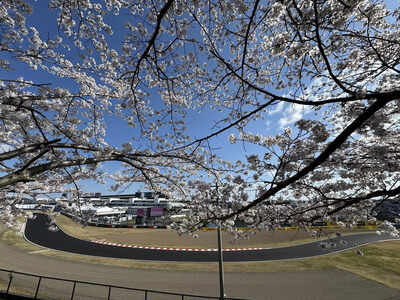- News
- Sports News
- FIA’s new circuit map aims to reduce F1 safety car delays during on-track stoppages
Trending
FIA’s new circuit map aims to reduce F1 safety car delays during on-track stoppages
To enhance race efficiency, the FIA has introduced a new circuit map aimed at reducing unnecessary safety car interventions in Formula 1. Starting with the Japanese Grand Prix, drivers and teams are guided on optimal stopping locations for quick car recovery without full safety car deployment, utilizing yellow flags or VSC where possible.
The 2024 Formula 1 season has seen a focus on improving the efficiency of races and minimizing unnecessary disruptions. In a major step toward this goal, the FIA has introduced a new circuit map, starting with the Japanese Grand Prix, aimed at reducing the frequency of safety car interventions during races.
FIA introduces new circuit map to reduce safety car interventions in Formula 1
The need for this change arose after the FIA conducted an in-depth analysis of safety car deployments throughout the season. Surprisingly, there were numerous instances where a safety car could have been avoided. These situations typically involved incidents where a car could have been stopped in a location allowing for a quick recovery, without the need to deploy a full safety car. In these cases, the FIA found that yellow flags or a Virtual Safety Car (VSC) could have sufficed, thus eliminating unnecessary delays.
Previously, drivers were briefed during meetings about potential locations for stopping their cars when issues arise, such as a suspected technical malfunction. The focus of these briefings has been on identifying areas where cars can be quickly recovered, which helps sessions resume faster and ensures that teams can get their cars back to the garage as quickly as possible—especially during practice sessions.
The new map also highlights specific locations on the circuit where gaps in the barriers are wide enough for a car to be pushed through. These gaps are marked with fluorescent orange paint to make them more visible to drivers and marshals. In addition, the map features exclamation mark symbols to indicate the optimal stopping spots. These locations are chosen based on their accessibility, safety, and proximity to recovery teams, which could potentially allow for a faster recovery without needing a full safety car intervention.
Looking ahead, the FIA plans to integrate this information into the software used by teams on the pitwall. This update will further enhance the ability of teams to make informed decisions about where to stop cars in the event of a minor issue. The software updates will be rolled out in the coming races, contributing to a more streamlined and efficient racing experience.
Also Read: 2025 F1 Japanese GP Free Practice 1: Who impressed and who struggled at Suzuka’s iconic circuit?
By implementing these changes, the FIA aims to reduce the disruptions caused by safety car interventions and keep the racing as fluid and exciting as possible.

About the Author
TOI Sports DeskEnd of Article
Follow Us On Social Media









